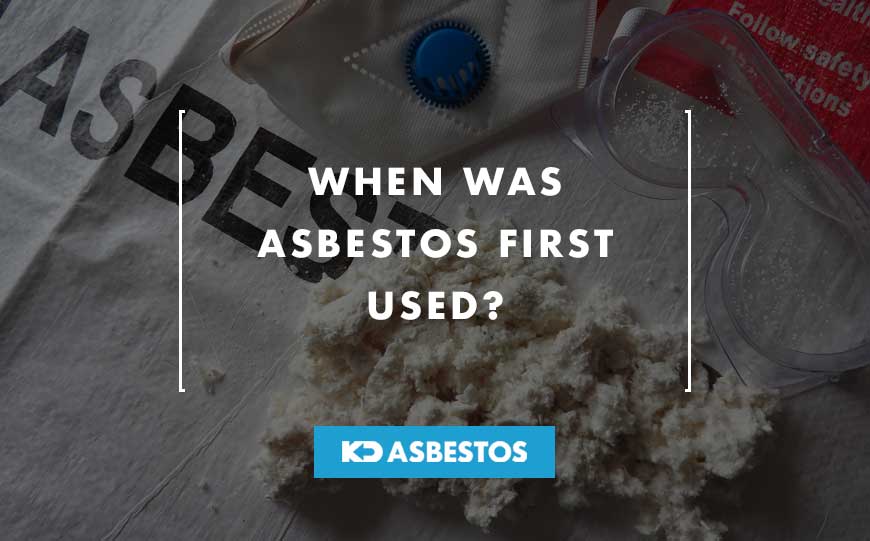
Asbestos is a naturally occurring mineral used for centuries for its fire-resistant, heat-resistant, and electrical-insulating properties.
Asbestos was used in various products, including building materials, insulation, brake pads, and roofing materials.
The history of asbestos is essential because it helps us to understand the risks associated with exposure to this material.
In this blog post, we delve into the depths of history to unravel the origins of asbestos and its initial applications.
Table of Contents
When Was Asbestos First Commonly Used?
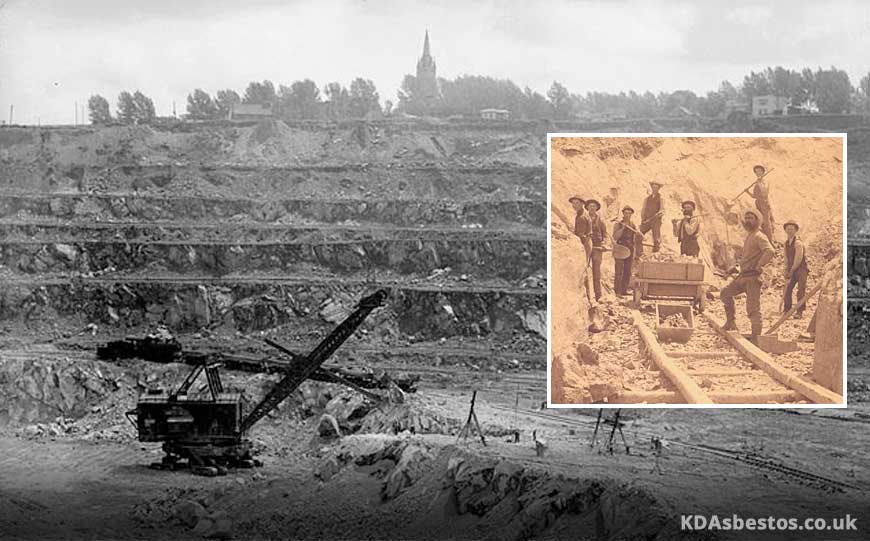
Image credit: National Film Board / Library and Archives Canada
Asbestos, a mineral found naturally on every continent, holds a rich history that stretches back hundreds of thousands of years.
To answer your question, when asbestos was first used, archaeological discoveries have unearthed evidence of asbestos fibres dating back to the Stone Age, approximately 750,000 years ago.
It’s believed that as early as 4000 B.C., asbestos’s long, hair-like fibres were employed as wicks in lamps and candles.
During 2000-3000 B.C., Egyptian pharaohs’ embalmed bodies were shrouded in asbestos cloth to protect them from decay.
In Finland, clay pots from 2500 B.C. contained asbestos fibres, likely incorporated to reinforce them and enhance their fire resistance.
Around 456 B.C., Herodotus, the renowned Greek historian, mentioned asbestos shrouds used to wrap the deceased before cremation, preventing their ashes from intermingling with those of the funeral pyre itself.
An alternative theory suggests that “asbestos” originates in the Latin idiom “amiantus,” meaning unsoiled or unpolluted.
According to this belief, the ancient Romans wove asbestos fibres into a cloth-like material, transforming them into tablecloths and napkins.
These textiles were purportedly cleansed by subjecting them to intense fires, emerging miraculously unharmed and even whiter than before.
The ancient Greeks and Romans were among the first to exploit the unique properties of asbestos.
They used asbestos fibres to make cloth, wicks for lamps and candles, and shrouds for the dead.
However, they also noted the harmful effects of asbestos on those who mined and worked with it.
The Greek geographer Strabo noted a “sickness of the lungs” in enslaved people who wove asbestos into cloth.
Roman historian, naturalist, and philosopher Pliny the Elder wrote of the “disease of slaves”.
He described using a thin membrane from the bladder of a goat or lamb used by the slave miners as an early respirator to protect them from inhaling the harmful asbestos fibres as they laboured.
Asbestos Use In Middle Ages
During the Middle Ages, asbestos played a significant role in society with its remarkable fire-resistant properties.
King Charlemagne
King Charlemagne of France, renowned for his expansive rule in the 8th and 9th centuries, recognised the value of asbestos as a fireproof material.
He ordered the creation of a tablecloth made of asbestos to prevent it from burning during feasts and celebrations, where accidental fires were common.
Additionally, like the ancient Greeks, Charlemagne wrapped the bodies of his deceased generals in asbestos shrouds, highlighting the mineral’s protective properties even in death.
Marco Polo
The travels of Marco Polo in the 13th century took him to regions where asbestos was prevalent, such as China.
In his writings, Polo described clothing made by the Mongolians from a “fabric which would not burn.”
To disprove the myth that asbestos originated from the hair of a woolly lizard, he visited an asbestos mine in China.
Polo’s observations shed light on the cultural significance and advanced knowledge surrounding asbestos in regions beyond Europe during the Middle Ages.
The Crusades
During the Crusades, which spanned from the 11th to the 13th centuries, asbestos played a role in warfare and defence.
The French, German, and Italian knights who participated in the First Crusade used trebuchets, catapults capable of launching flaming projectiles, to besiege cities.
Asbestos bags containing flaming pitch and tar were hurled over city walls, utilising the fire-resistant properties of asbestos to devastating effect.
This strategic use of asbestos highlights its importance in military tactics during this turbulent period.
The Renaissance
As the Middle Ages transitioned into the Renaissance, asbestos continued to find applications.
The Renaissance, known for its intellectual and artistic advancements, witnessed the exploration of new materials and techniques.
Asbestos was utilised in the creation of fireproof clothing for performers and entertainers.
Additionally, advancements in architecture and construction during the Renaissance saw the incorporation of asbestos-based materials, enhancing structures’ fire resistance and durability.
When Was Asbestos Used in Industry?
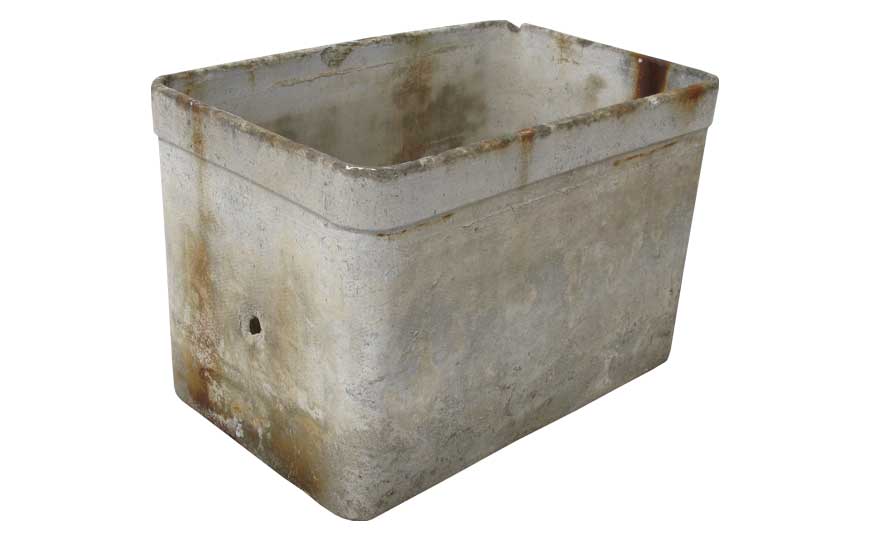
Image credit: Jacopo Wether
The discovery of vast asbestos deposits and the subsequent development of mining techniques played a crucial role in the widespread usage of asbestos throughout history.
The identification of abundant asbestos resources and the advancements in mining methods revolutionised the availability and accessibility of this mineral.
Identification of Abundant Asbestos Deposits
During the late 19th and early 20th centuries, significant asbestos deposits were discovered in various regions worldwide.
These findings revealed the presence of extensive reserves of asbestos, leading to a dramatic increase in its availability.
Canada, specifically the town of Asbestos in Quebec, emerged as one of the largest sources of chrysotile asbestos.
Other notable asbestos deposits were found in Russia, South Africa, Australia, and the United States.
Identifying these vast deposits marked a turning point in asbestos mining and utilisation.
Development of Mining Techniques
The discovery of substantial asbestos deposits prompted the development of advanced mining techniques.
Labour-intensive processes such as hand drilling and extraction were used to mine asbestos.
However, as demand for asbestos grew, more efficient techniques were devised to extract the mineral on a larger scale.
Mechanised mining methods, including drilling machinery, dynamite, and earthmoving equipment, revolutionised the mining industry.
These techniques enabled faster and more extensive asbestos extraction, increasing production and availability.
Increase in Asbestos Production
Asbestos production increased rapidly in the early 1900s, reaching more than 30,000 tons annually.
Children and women were added to the workforce, preparing, carding, and spinning the raw fibres, while men worked in the mines.
The use of asbestos increased even more in the 1960s and 1970s.
During this time, dozens of asbestos mines were opened in the United States, and the industry employed thousands of people.
However, the health risks associated with asbestos exposure were becoming increasingly apparent.
In 1971, the U.S. Environmental Protection Agency (EPA) issued a report warning of the dangers of asbestos.
In 1979, the EPA banned the use of asbestos in new products.
However, asbestos was still used in many existing products, and it wasn’t until 1992 that the EPA banned all uses of asbestos.
Hazardous Effects Of Asbestos

Image credit: Shutterstock
Early Medical Observations
The widespread usage of asbestos throughout the 20th century eventually led to the recognition
of the severe health risks associated with its exposure.
As scientific research and medical investigations unfolded, it became evident that asbestos posed a silent danger to human health.
As early as the late 19th century, physicians began noticing a peculiar pattern of lung diseases among asbestos workers.
Respiratory and lung abnormalities were documented, primarily among asbestos miners and factory workers.
However, the connection between these health problems and asbestos exposure was not immediately established, and the true extent of the risks remained largely unknown.
Occupational Health Studies
In the early to mid-20th century, epidemiological studies began shedding light on the health effects of asbestos exposure.
Researchers observed a higher incidence of lung diseases, particularly lung cancer and mesothelioma, among asbestos workers compared to the general population.
These studies provided compelling evidence linking asbestos exposure to various respiratory illnesses and solidified the growing concern surrounding asbestos-related health risks.
Regulatory Measures and Workplace Safety
As awareness of asbestos-related health risks grew, regulatory bodies and governments took action to address the issue.
In the 1970s and 1980s, many countries implemented stricter regulations to protect workers and the general public from asbestos exposure.
These measures included setting permissible exposure limits and establishing handling, removal and asbestos waste disposal guidelines.
Bans and Phasing Out
In response to the mounting evidence of the dangers posed by asbestos, several countries began phasing out or banning the use of asbestos.
In the late 20th century, countries like Australia, the United Kingdom, and many European nations implemented bans on asbestos-containing products.
Recognising the health risks associated with asbestos led to a decline in its usage and a shift towards safer alternatives in various industries.
Usage of Asbestos in Products
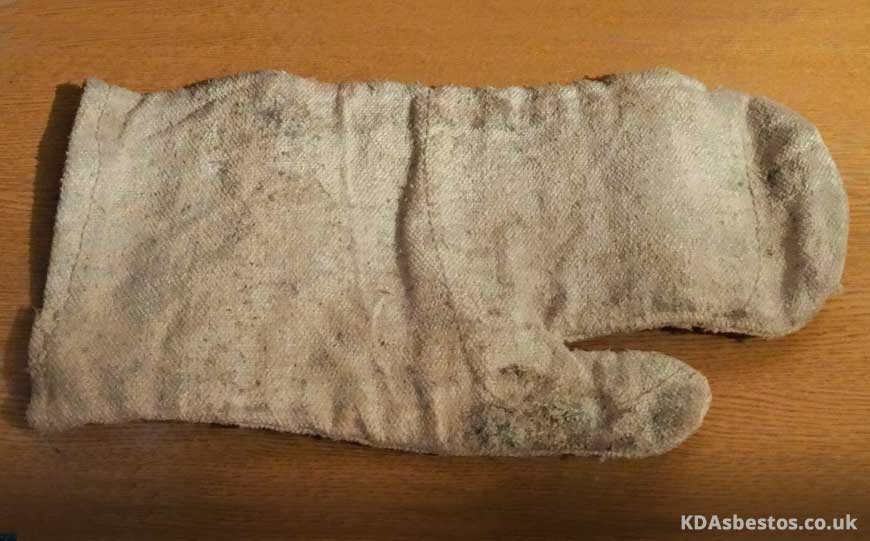
Image credit: Lukasz Katlewa
Although asbestos usage has significantly declined, it is essential to be aware of some everyday products that may contain asbestos, especially in older buildings and infrastructure.
Construction Materials
Asbestos was commonly used in building materials such as insulation, roofing shingles, cement pipes, wallboards, joint compounds, and textured paints.
These materials may still exist in older homes, schools, and commercial buildings.
Thermal & Electrical Insulation
Asbestos was widely used in insulation products, including pipe insulation, ductwork insulation, boiler insulation, electrical insulation, and gaskets.
Asbestos-containing insulation can be found in residential, commercial, and industrial settings.
Automotive Parts
Asbestos was used in various automotive components, particularly brake pads and linings, clutch facings, gaskets, and valve rings.
However, many countries have implemented regulations to restrict or ban the use of asbestos in automotive parts.
Fireproofing Materials
Asbestos was incorporated into building fireproofing materials, including spray-applied fireproofing, fire-resistant drywall, and fire-resistant coatings.
These materials were commonly used to protect structural elements and prevent the spread of fire.
Textiles & Fabrics
Asbestos fibres were woven into fabrics to create heat-resistant and fireproof textiles.
Asbestos-containing textiles, such as firefighter suits, gloves, and aprons, were used in protective clothing.
These products are now regulated and typically replaced with safer alternatives.
Household Products
Asbestos was used in various household items, including ironing board covers, stove pads, hairdryers, and even artificial Christmas tree flocking.
These products are more commonly associated with past usage and are less prevalent in contemporary times.
Modern Perspectives on Asbestos
In recent years, there has been a noticeable decline in the use of asbestos due to the growing awareness of its health hazards.
Asbestos-related diseases have increased scrutiny and regulation of its use in many countries.
Governments and regulatory bodies such as Health and Safety Executive (HSE) have implemented stricter guidelines and regulations to protect workers and the general public from asbestos exposure.
This has significantly reduced the use of asbestos in construction materials, insulation, and other products.
Moreover, there has been a shift towards developing and using safer alternatives to asbestos.
New materials and technologies have been introduced to replace asbestos in various applications.
These alternatives provide similar functionalities without the associated health risks.
For example, fibreglass, cellulose fibres, and mineral wool are common substitutes for asbestos insulation.
Importance of Responsible Handling & Removal of Asbestos
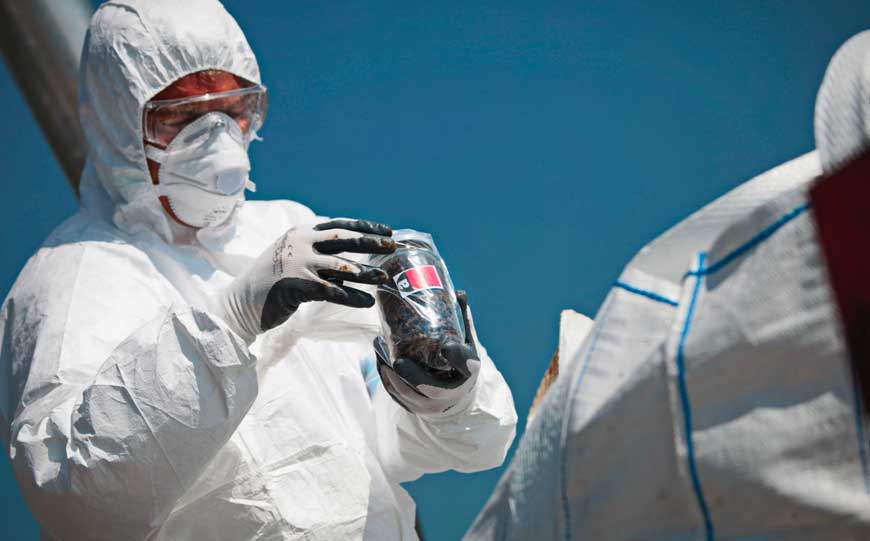
Image credit: Shutterstock
The responsible handling and removal of asbestos containing materials is paramount due to the severe health risks associated with asbestos exposure.
When asbestos-containing materials are disturbed or damaged, microscopic fibres are released into the air.
Inhalation of these fibres can lead to severe health conditions, including lung cancer, mesothelioma (a rare and aggressive cancer affecting the lining of the lungs, abdomen, or heart), and asbestosis (a chronic lung disease).
The latency period between exposure and development of these diseases can be several decades, making early prevention and responsible handling crucial.
Proper handling and removal of asbestos-containing materials require specialised training, equipment, and adherence to strict guidelines.
Frequently Asked Questions
When was Asbestos First Used in U.K Homes?
Asbestos was first used in U.K. houses in the early 1900s.
It was used in various building materials, including roofing, siding, insulation, and fireproofing.
Asbestos was also used in household products, such as oven gloves and ironing boards.
Did the U.K. Mine Asbestos?
Yes, the United Kingdom did mine asbestos in the past.
Asbestos mining in the U.K. dated back to the late 19th century and continued until the early 2000s.
The country had significant asbestos deposits, and mining operations were established in various regions.
Conclusion
In conclusion, asbestos has a long and complex history, dating back thousands of years to ancient civilisations.
Its use became widespread during the industrial revolution due to its desirable properties, such as fire resistance and insulation capabilities.
However, the devastating health consequences of asbestos exposure became evident in the 20th century, leading to increased regulation and awareness.
If you’re concerned about the presence of asbestos in your property or need licensed asbestos removal, KD Asbestos is a trusted provider to consider.
With our expertise and experience, we can help assess, manage, and safely remove asbestos-containing materials, protecting your health and well-being.
Get in touch with us to get rid of asbestos.